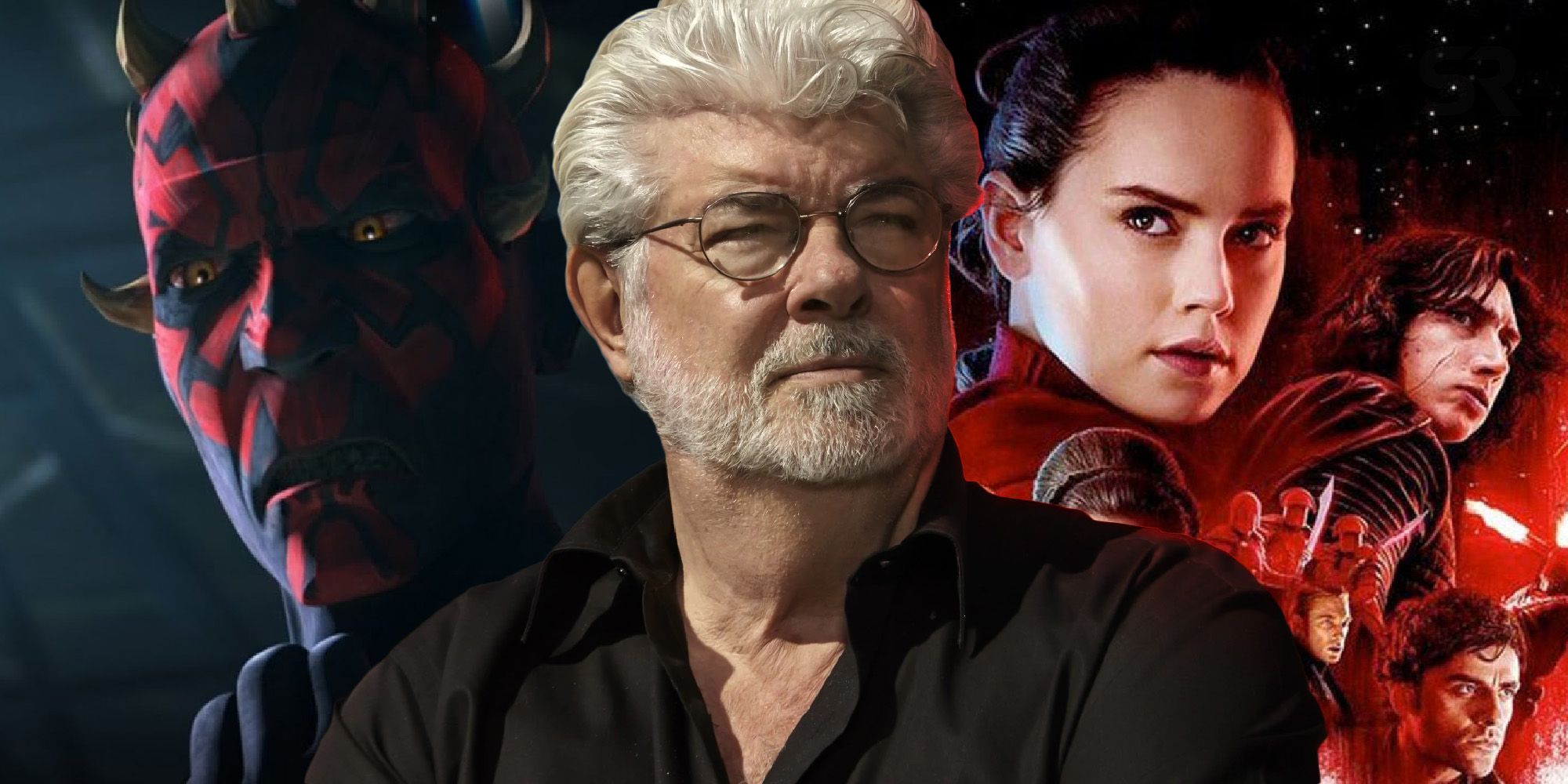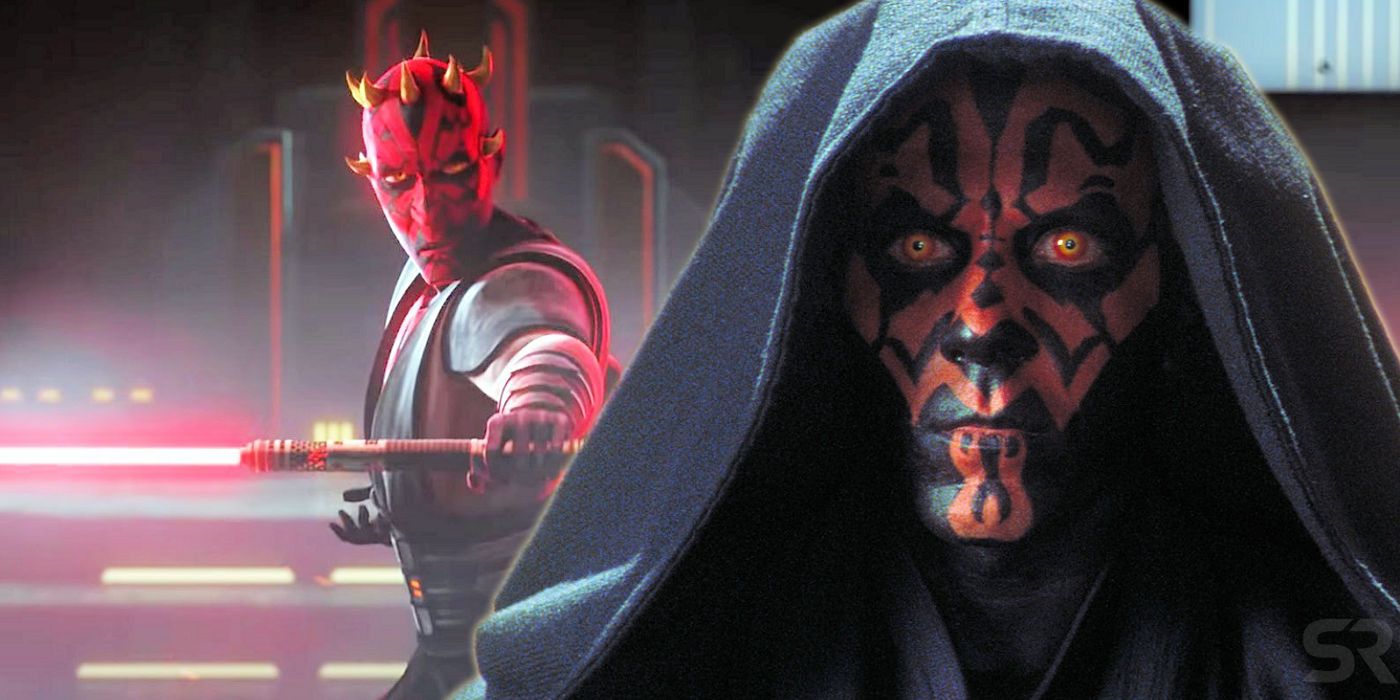George Lucas wanted Darth Maul to be the mastermind of all crime in his Star Wars sequel trilogy, which is a storyline that was ultimately used in Clone Wars. After his bisection and freefall at the end of Star Wars: Episode I — The Phantom Menace, Maul re-emerged in Clone Wars season 4 as a tormented shell of his former self. Maul rehabilitated and returned to villain status, and, unable to rejoin the Sith ranks, Maul turned to the crime world in his quest for power.
Maul’s status as a crime lord is established in the final seasons of Clone Wars and is referenced again in his reveal as the master manipulator at the end of Solo: A Star Wars Story. According to the book, Star Wars Archives Episode I-3 The Prequels, Lucas intended to pit the fan-favorite Maul as a powerful crime lord against Princess Leia, as Leia tries to rebuild the New Republic. While Disney chose to go in a different direction with the Star Wars sequels, Maul’s arc found a new home in Clone Wars.
While Disney decided against using Lucas’ plans for the sequel trilogy, his idea of Maul as a crime boss found its way into the final seasons of Clone Wars. In the interview, Lucas envisions Maul as “the godfather of crime in the universe,” a role Maul fully realizes in Clone Wars seasons 5 and 7. Maul seizes control of Mandalore and leads his Shadow Collective of mob bosses to expand his influence across the galaxy, and even after losing power in the Siege of Mandalore, he rises again as the leader of Crimson Dawn in Solo.
Maul’s motives also line up with Lucas' plans for the character; he sets the stage for Maul’s rise in the interview, saying, “as the Empire falls, he takes over.” In the Clone Wars season 7 episode “The Phantom Apprentice", Maul expresses that same desire to take power in the midst of chaos, this time in the aftermath of Order 66. Given that Maul’s arc wasn't used in the Star Wars sequel trilogy, showrunner Dave Filoni was wise to not leave Maul’s story as a mob boss on the cutting room floor and, instead, use it to further develop and add nuance to an iconic villain.
Maul’s life of crime is also a natural fit when aligned with the rise of the Empire, both in terms of Clone Wars and for future Star Wars projects involving Maul. His relegation to the sidelines in the transition between the Republic and Empire eases Maul of the burden of being the villain of an entire trilogy, not to mention having his story assume the galactic stakes of the movies; it instead opens the door for more intimate explorations of the crime world. The expedited timeline also makes more sense, with Maul rising to power during Clone Wars instead of staying dormant throughout the original trilogy before emerging in the sequels.
Star Wars fans have good reason to wonder what could have been if the Lucas’ Star Wars sequels had made it to the big screen and if Maul had returned to the forefront as the central villain, especially with the controversy around Disney’s trilogy. By moving Maul’s story up in the Star Wars timeline, Filoni ensured that Maul’s compelling life of crime, and its fresh exploration of the crime world of the Star Wars galaxy, could carve out its place in canon.


